Did you know that most homes are built without a deck? Don’t miss out on the joys of outdoor living! It’s time to consider building your own deck and unlocking the full potential of your property.
From hosting meals and entertaining guests to cooking up a storm or simply relaxing with a good book, a deck can transform your outdoor space or patio into a haven of relaxation and enjoyment. In this comprehensive guide, we’ll explore various types of decks and help you choose the perfect one for your deck project.
Get ready to create the ultimate outdoor oasis with a deck that suits your lifestyle and enhances your home’s value!
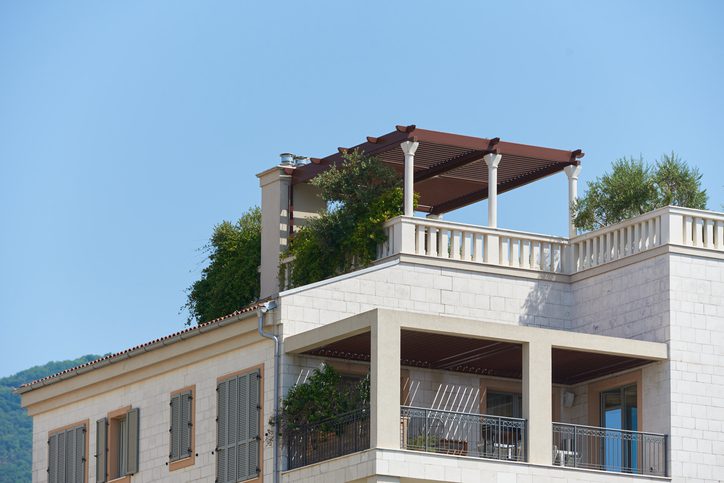
Building a New Deck Begins Some Considerations:
Building a new deck can be an exciting and fun home improvement project that adds value and functionality to your property. However, it requires careful planning and preparation to ensure a successful outcome. Here are some key things you’ll need when building a new deck on your house:
Building permits: Check with your local municipality or city to determine if you need any permits for constructing a deck. Permit requirements vary depending on your location, and obtaining the necessary permits is crucial to ensure your deck complies with local building codes and regulations.
Design plans: Create a design plan for your deck, including its dimensions, layout, and features such as stairs, railings, and any additional structures. Consider factors such as the size and shape of your yard, the orientation of your house, and the intended use of the deck when developing your design plans.
Budget: Establish a budget for your deck construction project, including materials, labor costs, and any additional expenses, such as permits, inspections, and site preparation. It’s essential to have a clear understanding of your budget before starting the project, to avoid unexpected costs and stay within your financial means.
Building materials: Choose the appropriate materials for your deck, based on factors such as durability, aesthetics, and maintenance requirements. Common materials used for decks include pressure-treated wood, cedar, composite decking, and various types of metal or PVC for railings. Make sure to purchase the necessary decking boards, joists, posts, and other hardware required for the construction.
Tools and equipment: You’ll need various tools and equipment to build a deck, such as a saw, drill, hammer, level, measuring tape, and others. The specific tools required may vary depending on the complexity of your deck design and the materials you’re using.
Skilled labor or DIY skills: Consider whether you’ll be building the deck yourself or hiring a professional contractor. Building a deck requires carpentry skills, as well as knowledge of local building codes and regulations. If you’re not confident in your DIY abilities, hiring a skilled contractor can ensure your deck is built safely and to code.
Safety precautions: Safety should be a top priority when building a deck. Make sure to take appropriate safety precautions, such as wearing protective gear, using tools and equipment properly, and following best practices for construction techniques. Additionally, be mindful of electrical, gas, and other utility lines that may be present in the construction area, and take necessary precautions to avoid accidents.
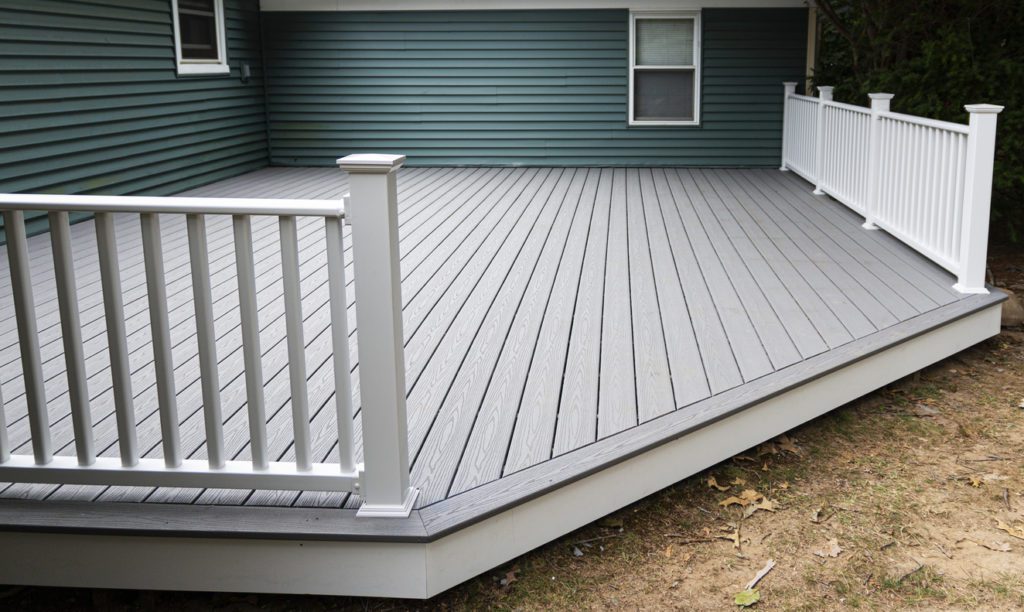
What Type of Decks Are There?
When building a new deck, there are various types of decks to choose from, depending on your preferences, budget, and the intended use of the deck. Here are some common types of decks:
-
Wood Deck: Wood decks are classic and versatile, and can be made from various types of wood, such as cedar, redwood, pine, or pressure-treated lumber. They can be stained or painted in different colors to match your outdoor aesthetics.
-
Composite Deck: Composite decks are made from a combination of wood fibers and recycled plastic, which makes them durable and low-maintenance. They are resistant to rot, decay, and insect damage, and are available in many colors and textures.
-
PVC/Vinyl Deck: PVC or vinyl decks are made from synthetic materials and are known for their durability and low-maintenance. They are resistant to moisture, rot, and insects, and do not require staining or sealing.
-
Metal Deck: Metal decks, such as steel or aluminum, are durable and long-lasting. They are resistant to moisture, rot, and insects, and are often used in contemporary or industrial-style decks.
-
Elevated/Second-story Deck: These decks are built higher off the ground and often attached to the second story of a house or other elevated structures. They can provide great views and are suitable for homes with sloping yards or uneven terrain.
-
Pool Deck: Pool decks are specifically designed for use around swimming pools and need to be slip-resistant and water-resistant. They can be made from various materials, such as wood, composite, or PVC/vinyl.
-
Multilevel Deck: Multilevel decks have two or more levels, connected by stairs or pathways, and can create an interesting visual appeal. They are suitable for large outdoor spaces or sloping yards, and can provide different functional areas for seating, dining, or entertaining.
-
Rooftop Deck: Rooftop decks are built on the roof of a house or building, and can provide additional outdoor living space in urban areas. They often require special considerations, such as structural reinforcement and waterproofing.
-
Green/Eco-friendly Deck: Green decks are built with sustainable materials, such as reclaimed wood, recycled composites, or bamboo, and are designed to have a low environmental impact. They are ideal for environmentally conscious homeowners.
-
Covered/Porch Deck: Covered decks, also known as porch decks, have a roof or pergola, providing shade and protection from the elements. They are suitable for areas with hot or rainy climates, and can be used for outdoor living, dining, or relaxing.
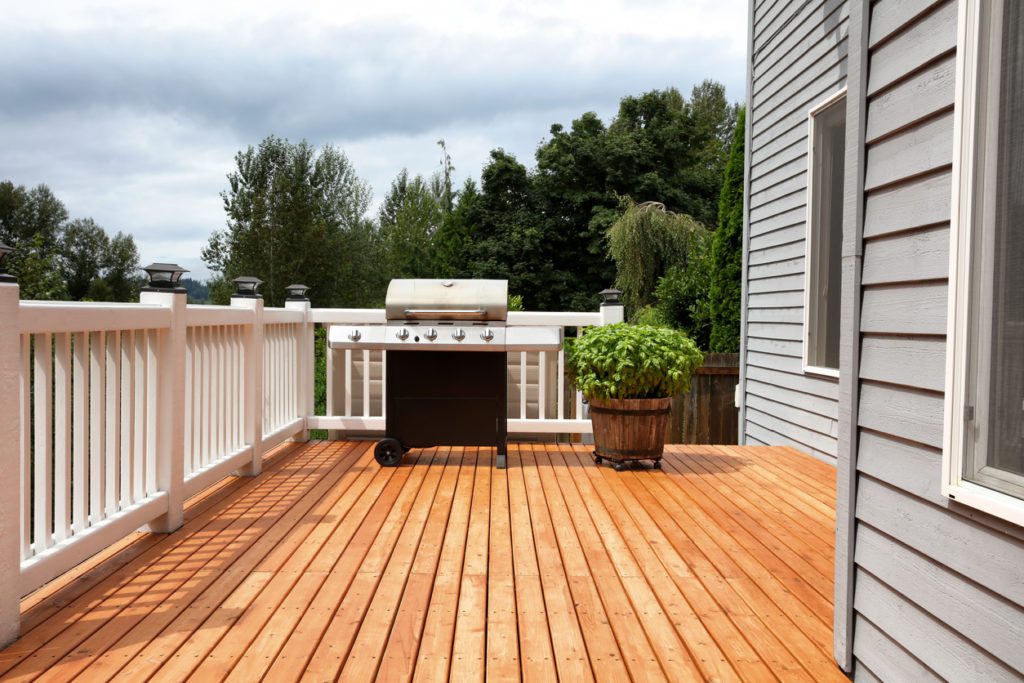
If I like more than one type of deck, can they be combined?
When combining different types of decks, it’s important to ensure that the design and construction are done properly to meet local building codes and regulations, and to ensure that the different materials used are compatible with each other for stability and durability. Consulting with a professional deck builder or contractor with experience in combining different types of decks can be helpful in ensuring a successful and safe outcome.
Here are some examples of how different types of decks can be combined:
Wood and Composite Deck: It is possible to use both wood and composite materials in a single deck design. For example, you could use wood for the main deck surface and railing, while using composite materials for the decking boards or vice versa. This combination can provide a blend of natural aesthetics with low-maintenance durability.
Covered and Open Deck: You can combine a covered or porch deck with an open deck to create a multi-functional outdoor space. The covered portion can provide shelter from the sun or rain, while the open deck can be used for sunbathing, grilling, or other activities.
Elevated Wood/Composite and Ground-Level Concrete/Paver Deck: If you have a sloping yard or uneven terrain, you could combine an elevated wood or composite deck with a ground-level concrete or paver deck. The elevated deck can provide an elevated seating or dining area with views, while the ground-level deck can create a stable and functional space for other activities.
Pool Deck with Different Materials: If you have a pool, you can use different types of decking materials for different areas of the pool deck. For example, you could use composite or PVC/vinyl decking around the pool itself for its water-resistant properties, and wood or concrete for the surrounding areas to create a different visual appeal.
Multilevel Decks with Different Materials: Multilevel decks can incorporate different types of materials for each level or section, such as using wood for a main deck level and composite for an upper deck level. This can add visual interest and create distinct functional areas within the same deck structure.
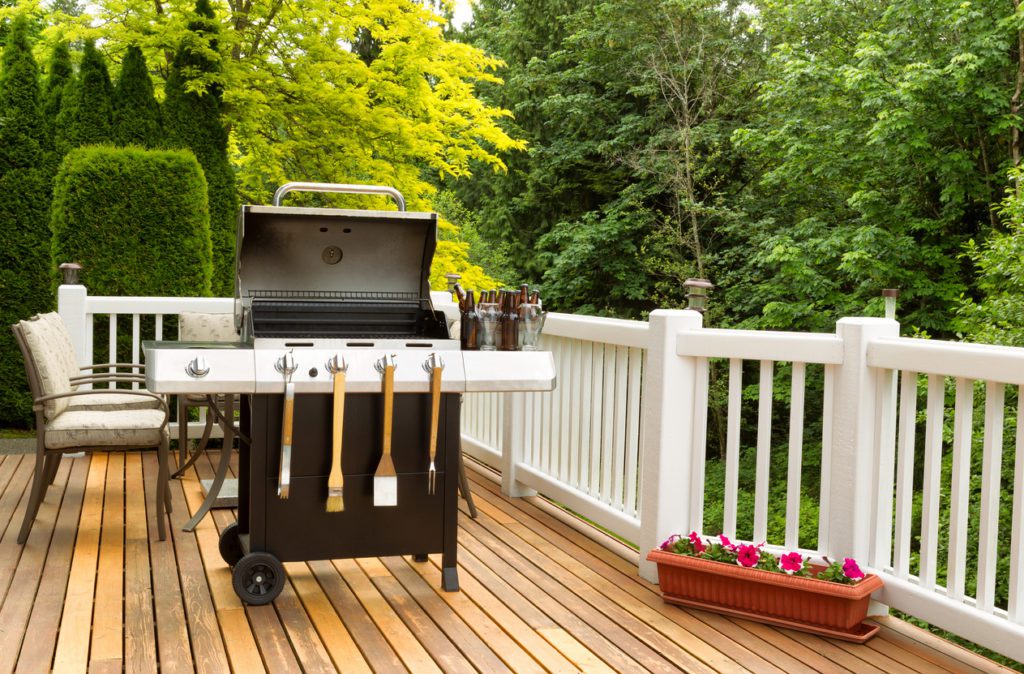
Entertaining on the Deck
Entertaining on a new deck can be a delightful experience, designed to encourage mingling and foster warm conversations between guests and friends. As the evening sun sets, the soft glow of citronella candles on the table provides a cozy ambiance while keeping pesky bugs at bay.
The inviting table, adorned with fresh flowers and delicious refreshments, serves as a centerpiece for guests to gather around, creating a focal point for shared laughter, cocktails, and camaraderie. The spacious and well-designed deck layout allows easy flow and movement, providing ample seating options for guests to relax and mingle comfortably if you are planning a party, dinner, backyard get together, summer meal, or family night.
With the perfect combination of thoughtful deck design, warm lighting, and welcoming amenities, entertaining on a new deck becomes an enjoyable and memorable experience for all.
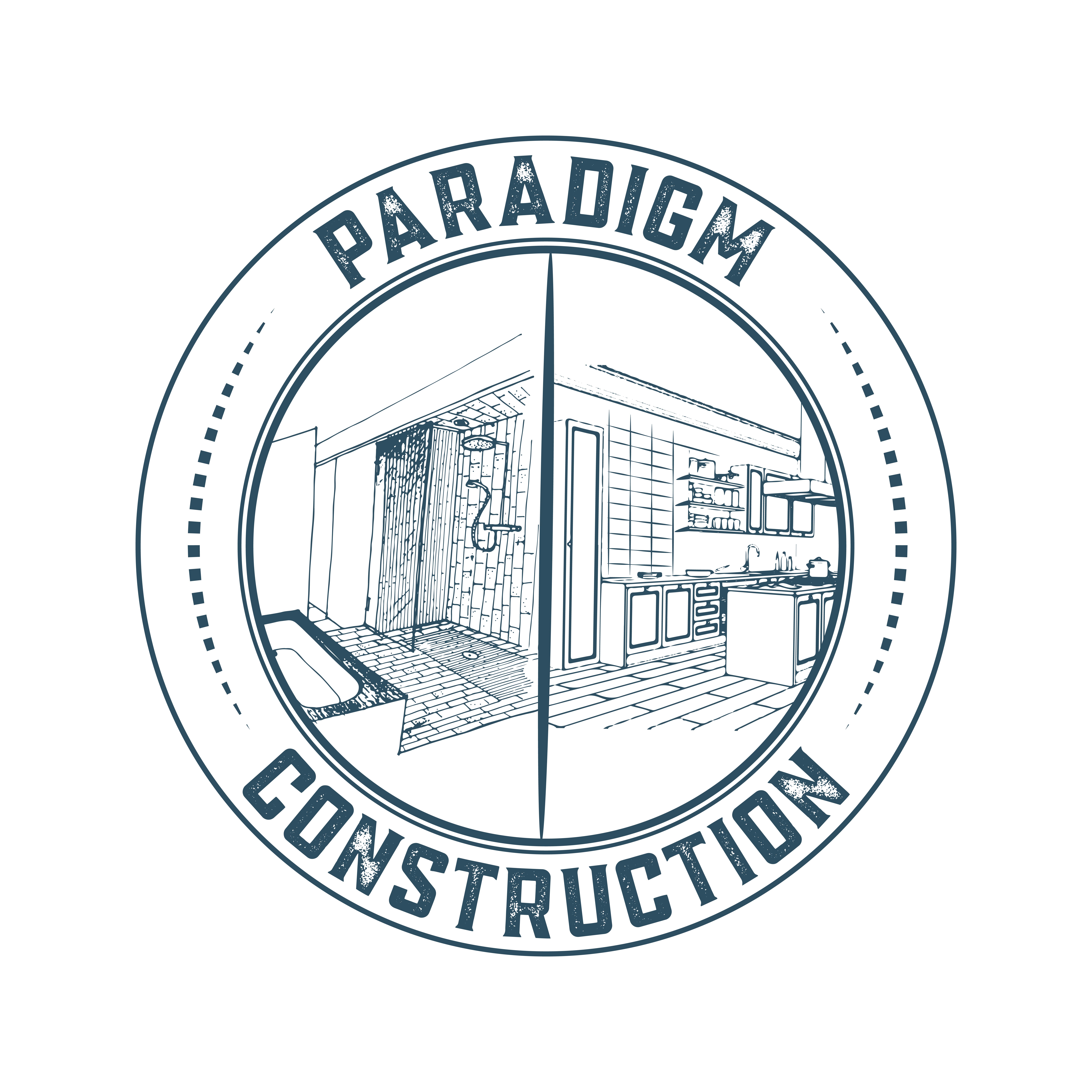
Using a Licensed Contractor Has It’s Benefits
There are several benefits to using a licensed contractor to build your new deck. Here are some key advantages:
Expertise and Experience: Licensed contractors have the expertise and experience to design and construct a deck that meets local building codes, regulations, and safety standards. They are knowledgeable about proper deck construction techniques, materials, and best practices, which can ensure your deck is built to last and safe for use.
Legal Compliance: Building a deck typically requires obtaining permits and complying with local building codes and regulations. Licensed contractors are familiar with these requirements and can navigate the permitting process on your behalf. This helps ensure your deck is built in compliance with all applicable laws and regulations, avoiding potential legal and financial liabilities.
Quality Workmanship: Licensed contractors are accountable for the quality of their work. They pride themselves in their reputation and strive to deliver high-quality workmanship. They have the skills and tools necessary to construct a deck that is structurally sound, level, and well-built, resulting in a durable and aesthetically pleasing deck.
Insurance Coverage: Licensed contractors typically carry liability insurance and workers’ compensation insurance, which provides protection in case of accidents, property damage, or injuries that may occur during the deck construction process. This helps protect you as a homeowner from potential liabilities and financial losses.
Warranty and Guarantees: Licensed contractors may offer warranties or guarantees on their workmanship, materials, or both. This provides you with peace of mind knowing that if any issues arise with your deck after construction, the contractor will take responsibility for correcting them, subject to the terms of the warranty or guarantee.
Time and Cost Savings: Hiring a licensed contractor can save you time and effort, as they handle all aspects of deck construction, including design, permitting, materials procurement, and construction, which can be complex and time-consuming. Additionally, a licensed contractor may have established relationships with suppliers, which can lead to cost savings on materials. They can also provide accurate cost estimates upfront, helping you budget effectively and avoid costly surprises later.
Paradigm Construction in Nashville, TN
Paradigm Construction tackles renovation projects with the same level of creative passion and innovation as our new construction work. Each remodel presents unique circumstances that allow for updates, transformations, or complete reinventions of your space. The team of skilled artisans is adept at navigating the challenges that arise during renovations, and they work closely with clients, architects, and managers to deliver stunning and enriching finished spaces.
Their expertise lies in crafting custom decks with meticulous attention to detail. They can build platforms extending from side to side, like a wooden floor outside your home, like a ship deck, incorporate porch swings that hold drinks, seating that incorporates pillows, hanging plants, places to hang pictures, and a place to prepare food for any occasion.
It’s their true passion and approach that sets them apart. At Paradigm Construction, they see the construction of a desk as a fusion of exquisite craftsmanship, orchestrated through a proven system of collaboration, strategic sequencing, time-honored techniques, and authentic materials and services. They would be honored to apply our expertise and experience to building your dream deck.